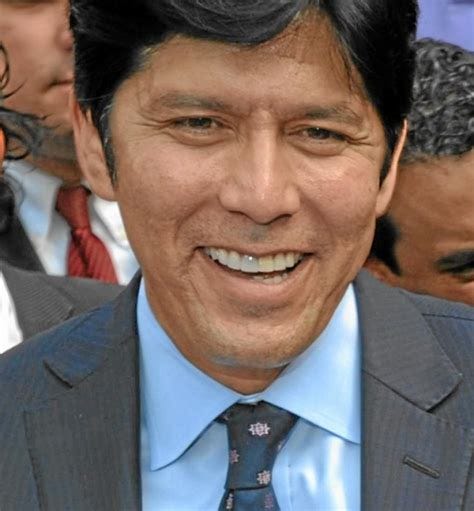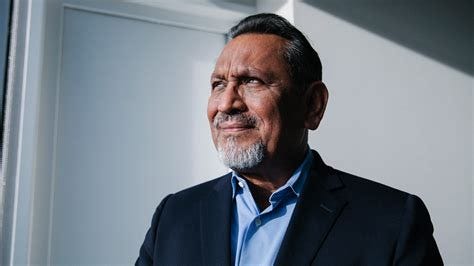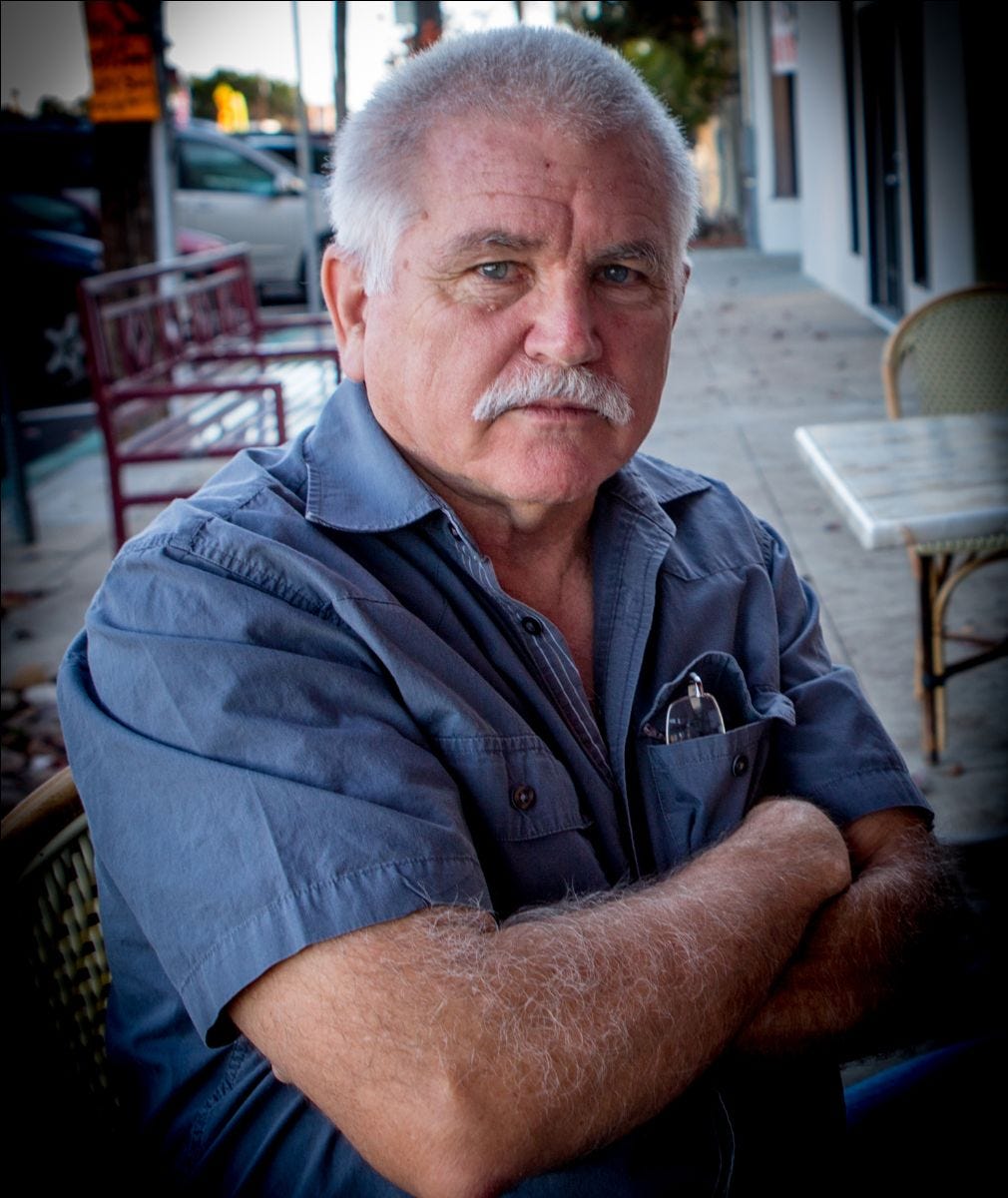How LA Became a Unified City, and How We Can Lose It
Episode 2: How will LA survive without a central vision? The illusion of a unified city ended on Oct. 9 as Angelenos became aware of a recording of vile bigotry made by City Council members.
Can Humpty-Dumpty (Political Unity) Be Put Back Together?
The secret tape recording had been made a year ago of three members of the Los Angeles City Council and the head of the Los Angeles County Federation of Labor. The tape instantly destroyed years of work by thousands of people to bring our diverse city together.
The Watts Rebellion of 1965 was almost exclusively led and participated in by Blacks. It caused other oppressed ethnic groups to begin to think more deeply about the poor conditions they confronted on a daily basis. Then came the Sixties of Peace and Love which began with mainly white beats and hippies in Venice but spread throughout L.A. and the rest of the country, and to all ethnic groups. Music led the way with songs of understanding, struggle and unity.
Meanwhile, what began in the South as a Black movement for civil rights, led by Rev. Martin Luther King, also had a powerful effect on Latinos and whites.
In Los Angeles, King’s organization, the Southern Christian Leadership Conference (SCLC), was very active. Ministers, such as the Rev. James Lawson and the Rev. Al Dortch were leaders of the prestigious group. In the 1970s, Mark Ridley-Thomas was the SCLC’s Youth Director. He later served in the 1980s as the Executive Director of SCLC, before becoming involved in politics.
Yo Soy Chicano
Suddenly, everyone wanted to be together. In the fields of California, a similar movement was taking place, led by Cesar Chavez. Both movements were joined by white progressives and socialists.
In East Los Angeles, an urban movement, led by Bert Corona, resulted in an organization that put Chicanos on the map. At its height in the 1970s, Centro de Acción Social Autónomo, or "CASA," included 8,000 dues-paying members among whom were nearly all of the LA Chicano leaders for the past 50 years.
Co-founders with Corona were Humberto Camacho, a much-respected labor leader and a leader in the Pico Union neighborhood of LA. The third founder of CASA was Rose Chernin, a Russian Jewish immigrant and long-time activist in the Los Angeles Committee for Protection of the Foreign Born. Chernin was a generation older than the others but had years of experience in fighting for the rights of immigrants.
The first big issue for CASA was the defense of immigrants who were often deported without due process or any other rights. Gilbert Cedillo was a young member of CASA, who supported its emphasis on immigrant rights. His early exposure to Latino activists fighting for the rights of immigrants must have influenced him in his long fight for the right of immigrants to have a driver's license. Despite his recent foul-ups, no one can deny that Cedillo improved the lives of countless immigrants by winning them the right to a driver's license after years of effort.
Both Corona and Camacho were union activists. Bert Corona had been President of the International Longshore and Warehouse Union (ILWU Local 26), while Humberto Camacho was a lifelong member and leader of the United Electrical Workers Union (UE).
The ferment at CASA spread quickly to groups like the Brown Berets and MEChA, the student group, that spread Chicano power throughout the Southwest. At the same time, union ferment was building. The Furniture Workers Union led a general strike of ten plants in East L.A. One of their demands was an end to the war in Viet Nam. The bright spot for labor was the growing involvement of Chicanos in labor activism and leadership.
They were inspired by the 1950 film, Salt of the Earth, made by blacklisted actors including Will Geer, technicians, and political activists, which showed poor people struggling and winning a true life miners’ strike. It was years ahead of other media in showing the positive role of women in such struggles. Juan Chacon, who played the union leader was a steelworkers union activist in real life. Lorenzo Torrez, one of the strikers, became, 25 years later, the leading Communist organizing young Chicanos to fight for their rights.
Sleeping giants were awakening all over LA. Among them were various Asian nationalities and the American Indian Movement (AIM), which was active in the city. It was time for fundamental change in the character and consciousness of a great city.
The Tom Bradley Phenomenon
It was the activism of Blacks, Latinos, Asians, and progressive whites that led to the Tom Bradley phenomenon. Bradley had been a career Los Angeles Police Department (LAPD) officer. As a Black man, he faced a uphill struggle in a city that had never elected a Black mayor and was run by a far-right politician who race-baited the taciturn ex-cop. It took Bradley two elections before he won in 1973. Then there was no stopping him.
Bradley served as mayor for 20 years. His five terms made him the longest-serving LA Mayor in history. During those years, Bradley turned LA into a world-class city, by supporting urban transit in a city where you were expected to drive a car. He supported new white-collar jobs to replace some of the blue-collar jobs in steel, auto, rubber and their feeder plants. As neo-liberalism came to dominate the economy, LA lost much of its industrial base and tens of thousands of jobs. The factories were moved to low-wage areas in the South as well as Mexico and other countries.
However, Bradley’s most lasting contribution, until now, was to foster unity between peoples of color. One result was majorities of Blacks, Latinos, and Asians on the LA City Council and other important bodies. That unity profoundly changed LA from almost a Southern city to one of the most progressive in the US. Bradley’s influence, even after he stepped down as mayor was so strong, that his successor in office, Richard Riordan, a Republican investment banker who literally bought his way into office, was forced to tow the Bradley line.
Musical Chairs Make Politicians Dizzy
After 1990, when Prop. 140 imposed term limits on the California Legislature, a game of musical chairs began. Many LA politicians, not wanting to be out of office, got elected to the state assembly, got termed out, got elected to the state senate, got termed out, then went either to the US Congress, the LA City Council, or to another elective position. So it was, to one degree or another, with Ridley-Thomas, Antonio Villaraigosa, Cedillo, de León, Bob Hertzberg, and many others.
Because of term limits, it became important for officeholders to raise large amounts of money in preparation for seeking a new office every few years. Without term limits, incumbent officeholders had a much easier, and cheaper, time of getting reelected over and over.
In addition, candidates faced the possibility of having to run against another well-known politician who had also been termed out. This could be a nightmare for the permanent politician.
Because of term limits, politicians would often develop animosities that would follow over to the next board, legislature or commission they landed on. For instance, when both Gilbert Cedillo and Antonio Villaraigosa were planning to run for the same office, they almost came to blows. In fact, they never spoke again, nor did they work together for the benefit of the people. It was a sad ending for two kids from the barrio who were best friends when they were growing up.
Scorecard
If you haven’t been following what your elected representatives are doing, here is the latest:
Nury Martinez, President, City Council - RESIGNED
Ron Herrera, President, Los Angeles County Federation of Labor - RESIGNED
(while Herrera was not an elected officeholder, he did represent hundreds
of thousands of workers in LA).
Kevin de León, Member, City Council - HELL NO, I’M NOT RESIGNING.
(whatever you think of de León’s decision, you have to admit that
it was a courageous decision. He’s never been known for a lack of
courage, maybe a lack of good sense. He’s gambling on people having
short memories. He might win that bet.) Currently, he’s having small house meetings in his district to shore up his support and explain why he is not resigning.
Gilbert Cedillo, Member, City Council - NOT RESIGNING
(His term in office only runs for a couple more months).
Gilbert, say it isn’t so! To make matters worse after that terrible tape, Cedillo endorsed one of the most right-wing candidates for the Council, Traci Park. She is a management lawyer, which means her job is to evict tenants and defend employers against their racist acts. Her opponent in District 11 is Eric Darling, who is a solid progressive.
Darling is also a lawyer, but one who defends tenants and other downtrodden victims of our capitalist system. Problem is, Mike Bonin, who is not running for reelection, has endorsed Darling. This must be so aggravating to Cedillo that he is tossing his lifelong principles out the window. Don’t do it Gil. Tell us the newspapers made a mistake. You could have just sat out the District 11 election. It doesn’t affect you.
Mitchell Englander - Member, City Council - RESIGNED (2020) - Served until convicted in a plea deal that involved taking bribes from two casinos. Sentenced to 14 months in federal prison.
Mark Ridley-Thomas - Member, City Council - EXPELLED (2022) - Indicted on federal bribery charges, October 13, 2021.
José Luis Huizar - RESIGNED (2020) - Indicted on bribery charges, June 23, 2020, from one of the biggest real estate development corporations, Shenzhen New World Group,
The Remaining Unindicted: Paul Krekorian, Bob Blumenfield, Nithya Raman, Paul Koretz, Monica Rodriguez, Marqueece Harris-Dawson, Curren Price, Heather Hutt, Mike Bonin, John Lee, Mitch O’Farrell, Joe Buscaino.
The LA City Council is a 15-member body. Six of them have either been indicted on federal charges or have brought shame on the Council and the City of Los Angeles with their derogatory remarks against other ethnic groups.
But worst of all is the danger that their unconscious talk will seriously damage the work that has been done in the past 50 years to build solidarity between oppressed ethnic groups. This solidarity that has enabled Blacks, Latinos, and Asians to have a share of political power. In these chaotic days, all of us who want a more equitable and fair Los Angeles should be thinking about moving forward, not returning to the bad old days before Mayor Bradley.
________________________________________________
Mike Davis - RIP
Thanks, Mike, for showing us the real LA.
His books include:
Prisoners of the American Dream: Politics and Economy in the History of the U.S. Working Class (1986, 1999, 2018)
City of Quartz: Excavating the Future in Los Angeles (1990, 2006)
¿Quién mató a Los Ángeles? (1994, Spanish only)
Ecology of Fear: Los Angeles and the Imagination of Disaster (1998)
Casino Zombies: True Stories From the Neon West (1999, German only)
Late Victorian Holocausts: El Niño Famines and the Making of the Third World (2001)
The Grit Beneath the Glitter: Tales from the Real Las Vegas, edited with Hal Rothman (2002)
Dead Cities, And Other Tales (2003)
Under the Perfect Sun: The San Diego Tourists Never See, with Jim Miller and Kelly Mayhew (2003)
Cronache Dall’Impero (2005, Italian only)
The Monster at Our Door: The Global Threat of Avian Flu (2005)
Planet of Slums: Urban Involution and the Informal Working Class (2006)
No One Is Illegal: Fighting Racism and State Violence on the U.S.-Mexico Border, with Justin Akers Chacon (2006)
Evil Paradises: Dreamworlds of Neoliberalism, edited with Daniel Bertrand Monk (2007)
Set the Night on Fire: L.A. in the Sixties, co-authored by Jon Wiener (2020)
Note to Readers: The first version of this article disappeared into the ether earlier today. If you did receive the earlier version, The Left Coast apologizes for the duplication.












